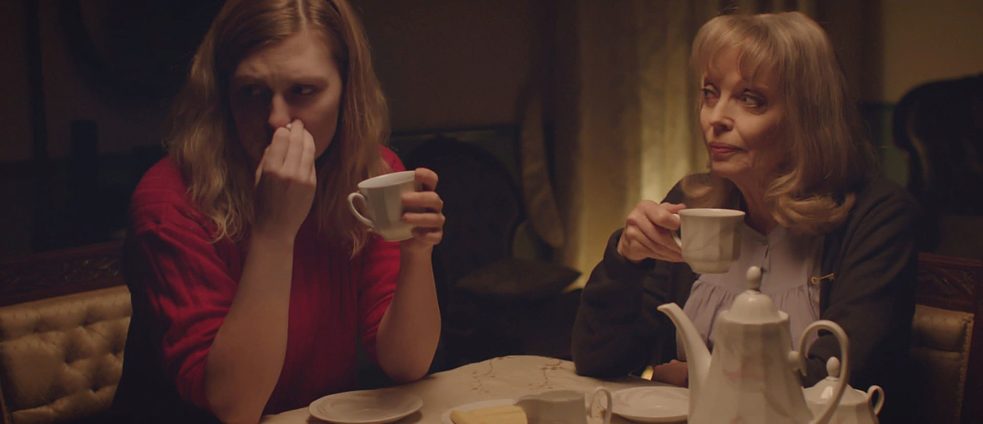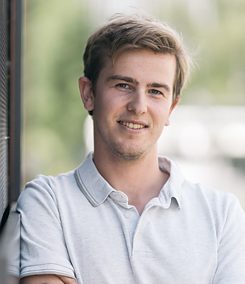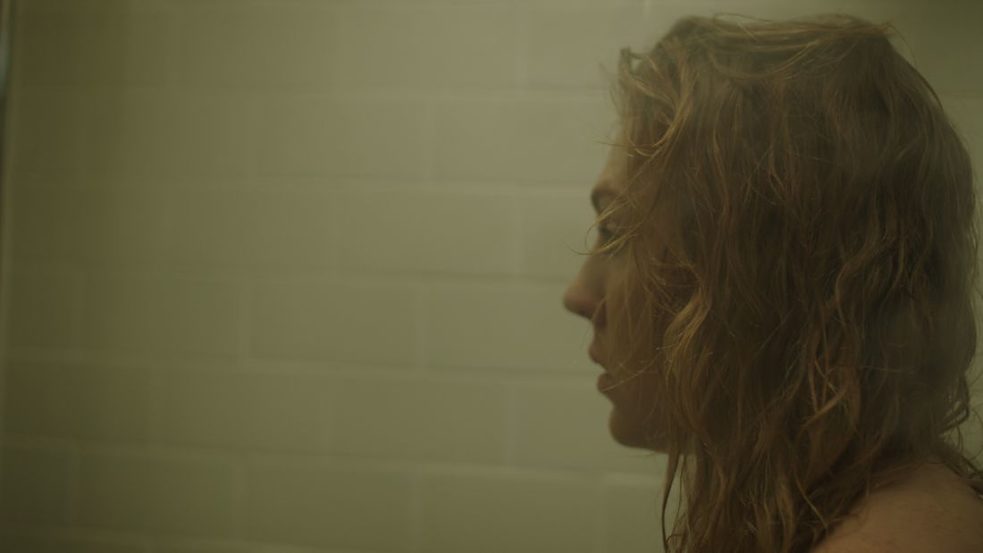Down Under Berlin Film Festival
Celebrating German-Australian tales: Stille Nacht

Matthew R. Young's short film Stille Nacht is set to screen at this year’s Down Under Berlin Film Festival. The filmmaker spoke to Kino in Oz's Sarah Ward about finding inspiration in a trip to Germany, telling intercultural stories and his hopes for the future of German-Australian cinema.
By Sarah Ward
In Stille Nacht, a familiar scene plays out - one that could happen in any home in any country. As a mother (Belinda Giblin) and daughter (Matilda Ridgway) tentatively reunite, secrets both new and old come to the fore, swirling as prominently as the tea they’re drinking. As universal as the scenario proves, it also teems with cultural specificity in director Matthew R. Young’s hands. Driven to explore the plight of German-Australians, the Australian director layers his 13-minute short film with a deep understanding of both Germans who’ve made Australia their home since the 20th century’s major conflicts, and of the generations who’ve since inherited their tension.
Drawing tonal and stylistic inspiration from sources as diverse as Cate Shortland’s Lore and Michael Haneke’s Amour, the result is an empathetic and probing short - a film intimately steeped in a difficult family relationship, while also peering more broadly at the German-Australian experience. Young spoke to Kino in Oz's Sarah Ward about the background of the film.
How did the story for Stille Nacht come about?
Matthew R. Young: It started with a single image and a special encounter. In 2016, I was living and studying in Potsdam, and I interviewed a woman, who surprised me with an Ostfriesentee (East Frisian tea) ceremony, which underscored our interview. This scenario, the imagery of the tea and the ritualistic way she went about it, it really stuck with me. The layers and elements of the tea - the reddish tea clouded by drops of cream covering Kandiszucker (rock sugar) which disintegrates ever so slowly until, after three cups of tea, all that is finally left are crystal shards delivering a sweet final kick - this imagery reminded me of how conversation is the unlocking of layers, a lowering of mask after mask as inner truths are allowed to be seen. That’s where the story first formed and you get to see a lot of that in the film as the mother holds a carefully trodden conversation with her mysteriously pregnant daughter, using the tea ceremony as a chance to reconnect - to chat, relax and unwind. But it’s hardly a night to relax.
 Matthew R. Young studied at Goethe-Institut from 2012 until 2019
| © Matthew R. Young
Matthew R. Young studied at Goethe-Institut from 2012 until 2019
| © Matthew R. Young
You spent a year in Germany before making the film - how did your experiences influence the narrative?
That was a special year and if it gave the narrative something, it would definitely be heart. I literally fell in love in Germany, also with the people and the culture - it was a second home and then I returned to Australia and re-connected with family. So it was an emotional time for me right when the narrative was starting to take form, and this heart carried throughout the entire process of making the film. I think that emotional context post-Germany did wonders for my creativity and determination levels. I was also studying philosophy during that year at the University of Potsdam, which had me engage with many thought-provoking lebensnah (close to life) human dilemmas. While these didn’t directly come into the narrative, they certainly influenced my thinking and fascination with what makes people tick and make difficult decisions.
Stille Nacht is an intimate film, paying close visual attention to its characters, and to the minutiae of their time together. What was your stylistic approach?
I wanted to immerse the viewer in what is kept silent, draw them into small details and unpack what is left unsaid. I wanted to create a feeling of being stuck with the characters, with a cinema of the senses approach. We used a lot of hand-held camerawork - so that the viewer can literally breathe with the characters, and feel the energy and dynamic in the relationship. We shot the major scenes in long takes, as the two tread around confrontation at the dinner table and then finally talk it out during the tea ceremony. We’d let the scene play out in its entirety in real time for each of the angles, which created a special dynamic on-set, immersive even for the crew to sit through as the whole story arc played out. These long takes gave us a lot of options for lingering in the silences in the edit, which became key to unpacking what goes unsaid. The approach also gave our editor a lot of freedom for how the story would be cut together, and she brought a lot to the table rather than me providing a strict guideline for how the story should be told. I definitely wanted to embrace a collective approach to the storytelling. I built a key creative team that I trusted and really listened to their input, which I think also counts as part of the aesthetic and project integrity.
In Stille Nacht, and in general, you’re specifically focusing on bring uniquely German-Australian stories to screen. What inspired that decision?
I feel I’ve discovered a collective fascination for these stories as I keep having surprise special encounters and compelling conversations with people who all seem to have some family story or personal recollection - or even just a fascination for the lack of what they know about some aspect of their family identity. And then each time I dig a little, researching what has been recorded or mapped out, I come across really powerful stories that have really moved me. But the thing is, I feel the Australian status quo - which somehow after an entire century is still unchanged - is holding these stories back and away from the mainstream public arena. It is 2019 and I think the time is ripe to start looking at these stories. I keep glimpsing a very deep iceberg here and that excites me, especially with the position I now found myself in as an experienced filmmaker and researcher with German language, capable of lending these stories a platform. This also ties into my dream of working bilingually to create international productions that engage creative partnerships and distributors in Germany and Australia.
 Matilda Ridgway has also starred in a number of productions at Sydney's Ensemble Theatre
| © Stille Nacht
What kinds of German-Australian stories are you looking to tell?
Matilda Ridgway has also starred in a number of productions at Sydney's Ensemble Theatre
| © Stille Nacht
What kinds of German-Australian stories are you looking to tell?
The stories I am currently working on are fiction based on historical and contemporary collective experience, dramatised to deliver a mix of hard-hitting and uplifting themes. The stories I’ve been gravitating towards most seem to have in common a centering of family, intercultural dialogue, the discovery and determining of one’s own identity, raising one’s voice and persevering through prejudice, and my favourite: unexpected friendships unlocking great feats of the human spirit. But there’s also so much variety. These stories span Australia’s lifespan, with both historical ones and contemporary.
You studied at the Goethe-Institut Australia. Did that have an influence on Stille Nacht, or on your path as a filmmaker?
I’ve done a variety of courses at Goethe, and it was actually during a Boost-Your-German course that I was first introduced to a number of intriguing stories about prolific German-Australians that made significant contributions to Australian society. This led me to further reading on German identity in Australia around the time that I was still working on Stille Nacht. And I often use the Referat (presentation) part of these courses at Goethe-Institut to present something film industry-related. For instance, I presented a while back on what the number of German and Australian co-productions in film to date signifies for the possible future of German and Australian ties in film. I thought it was abysmal that 11 official co-productions have occurred in 32 years, in stark contrast to the number coming out of partnerships with the UK and Canada and other countries. I find this interesting, because Germany seems to be such an attractive place for partnerships in film. I’m definitely hoping to see many more Australian co-productions linked to German partners, and would love to be a part of that increase.
Stille Nacht premiered at Flickerfest in Australia, and now it’s screening at the Down Under Berlin Film Festival. How important is it for you to share the film with audiences in both countries?
This was definitely the goal. The short film was a bit of an experiment really. I wanted to test the waters, spark some interest in this area of storytelling in both countries and get feedback from audiences - so that I can continually develop and improve this quasi new wave of German-Australian cinema form, so that it becomes an inclusive cinema form particularly well suited to resonate across borders. Especially, I would like this to target the German-speaking market whilst still being significantly English-focused and appealing to the Australian market and other spaces abroad. I don’t want it to be just for diasporic audiences - the idea is to create an international atmosphere with a very contemporary edge, tackling themes that will strike a chord with audiences widely, whilst finally giving these unique identity groups proper representation and a platform for their stories which have much to contribute to both Australia and the world today.
Stille Nacht will have its European premiere, with Matthew R. Young in attendance, at the 9th edition of the Down Under Berlin Film Festival, on September 28, 2019 at Moviemento Kino in Berlin.